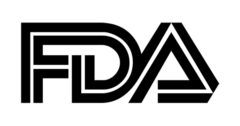
While FDA has been busy responding to the COVID-19 pandemic, the agency continues to press on with everyday work and initiatives. That was the message that FDA’s CDRH Director Jeffrey E. Shuren, M.D., J.D., shared during the CDRH Town Hall at the Medical Device Innovation Consortium (MDIC) 2020 Annual Public Forum (Virtual).
The hour-plus meeting called on a handful of experts from within the agency to share priorities with the medical device industry. One topic that stood out was CDRH’s focus on Advanced Manufacturing.
3D printing is the most common example in orthopedics that aligns with FDA’s Advanced Manufacturing efforts. However, FDA notes that myriad production techniques can be considered advanced, and often include:
- Integration of novel technological approaches,
- Use of established techniques in a new or innovative way, or
- Application of production methods in a new domain where no best practices or experiences are defined.
The personal protective equipment (PPE) shortages that resulted from COVID-19-related supply chain issues enhanced the center’s focus on Advanced Manufacturing, Dr. Shuren said. He noted that one of the greatest lessons that arose from the pandemic, thus far, is the need to bolster the resilience of the medical device supply chain.
“One of the steps FDA has been taking is making greater advancements in Advanced Manufacturing. Having more modern technology allows manufacturing to be more automated, more intelligent, more efficient, and in that respect, to make manufacturing a more efficient process,” he said. “I think MDIC can play a critical role in that activity, and something for us to consider is whether or not this is a workstream and something we consider as an expansion of our Case for Quality initiative.”
CDRH launched its Case for Quality Initiative in 2011 to shift industry and FDA from prioritizing compliance to prioritizing product quality and patient outcomes. Through Case for Quality, the agency has initiated multiple programs including Voluntary Improvement Program (VIP) and makeCAPACool.
Overall, FDA seeks new, collaborative and data-driven regulatory models. Advanced Manufacturing fits that goal and is the next stage in Case for Quality to make U.S. manufacturing more competitive, said Francisco “Cisco” Vicenty, Program Manager for Case for Quality in CDRH’s Office of Product Evaluation and Quality, Compliance and Quality Staff.
“It is the opportunity to demonstrate within a medical device company different controls, different mechanisms, all of the things that bring together a more error-proof production, a much more rapid product development cycle. It is a lot more information that we gain,” he said. “It’s all of the controls that the regulations and the quality system [are] intended to deliver really put together into a clean, sustainable package. It’s the next evolution.
“We see the Advanced Manufacturing efforts as an opportunity to really enable the production here in the U.S. to be a lot more resilient, to be a lot faster, to be a lot more engaged and data-driven as we move forward, which will make it more competitive and really deliver much better products down the road.”
CDRH’s formalization of Advanced Manufacturing initiatives will be necessary for orthopedic device companies to follow.
In the short term, it’s likely that FDA’s Advanced Manufacturing focus will continue to be on rapidly scaling manufacturing capabilities and shortening supply chains during public health emergencies, like a vaccine and PPE for COVID-19. Numerous orthopedic companies scaled production of PPE earlier this year, and in June, FDA provided an update on 3D printing in the rapid response to COVID-19.
In the long term, the continued push for Advanced Manufacturing could benefit orthopedics, especially the proliferation of 3D printing, as well as the desire to enhance automated, intelligent and efficient manufacturing processes.
Dr. Shuren said that several lessons have been learned in response to COVID-19, including the active engagement and collaboration between FDA and industry. The timely and continuous response between the two sides resulted in rapid access to technologies and could provide a blueprint for ways that FDA and industry can work together on all fronts moving forward.
“I think one of the questions before us is whether or not we want this world of very near-time engagement and back and forth to be the exception—or to be what we want during an emergency—vs. how we want business as usual to be conducted, even when there’s not a national emergency,” Dr. Shuren said.
CL
Carolyn LaWell is ORTHOWORLD's Chief Content Officer. She joined ORTHOWORLD in 2012 to oversee its editorial and industry education. She previously served in editor roles at B2B magazines and newspapers.




